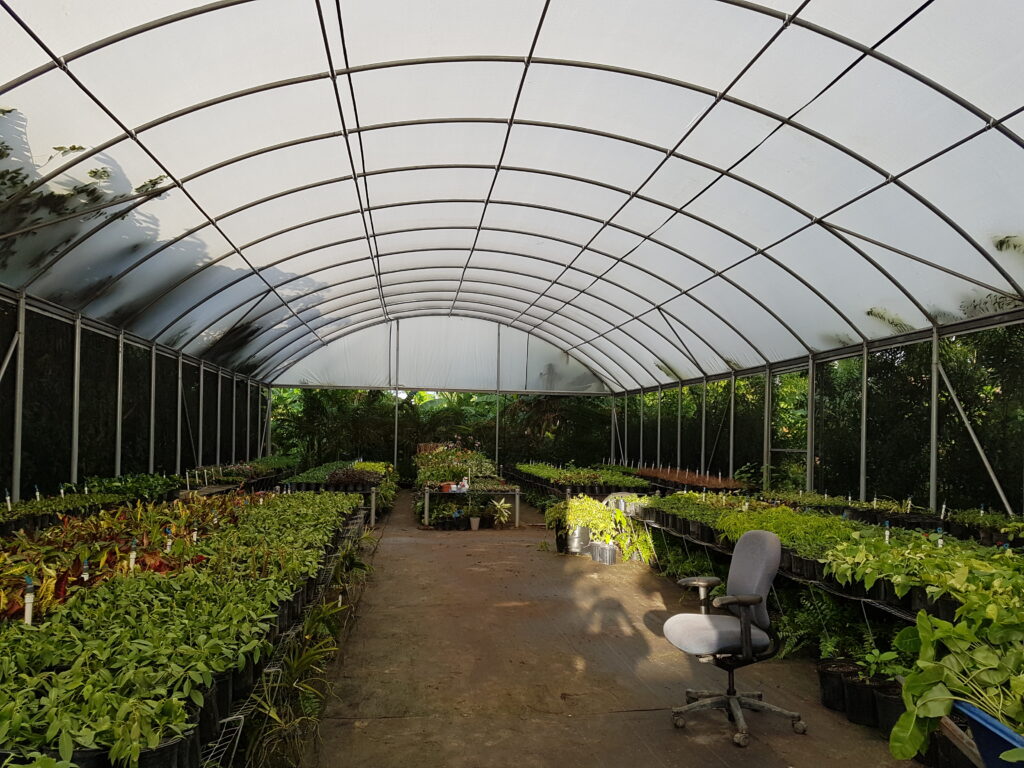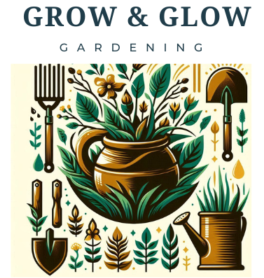
Building on our foundation guide, let’s dive deep into real-world applications across different climate zones and explore cutting-edge greenhouse technologies.
🏔️ TEMPERATE CLIMATE ANALYSIS: Yorkshire, UK Region
Climate Challenges:
- Short growing seasons (May-September)
- Limited winter sunlight (6-8 hours peak)
- High humidity and frequent rain
- Temperature swings: -5°C to 25°C
Typical 20x30ft Commercial Operation Setup
Recommended Glazing Solution:
- Twin-wall polycarbonate (16mm thickness)
- U-value: 1.9 W/m²K vs. single glass (5.7 W/m²K)¹
- Light transmission: 83% with UV protection
- Expected cost savings: 30-40% less heating compared to glass²
Optimal Heating System:
- Ground-source heat pump (COP 3.5-4.5)
- Thermal mass floor: 6-inch concrete with embedded pipes
- Backup heating system using renewable energy
- Typical annual heating costs: £1,000-1,500 vs. £2,500-3,500 with gas³
Effective Ventilation Strategy:
- Ridge vents with automatic openers (trigger at 20-24°C)
- Side louvres for cross-ventilation
- Circulation fans for winter air movement
- Expected outcome: Significant reduction in fungal diseases
Expected Performance:
- Tomatoes: 35-50kg/m² annually⁴
- Season extension: October to April production possible
- Typical ROI: 18-24 months
☀️ MEDITERRANEAN CLIMATE ANALYSIS: Valencia, Spain Region
Climate Challenges:
- Intense summer heat (35°C+ for months)
- Low humidity (30-40%)
- Strong winds and dust storms
- Water scarcity
Typical 15x40ft Family Enterprise Design
Cooling-Priority Design:
- 50% shade cloth (retractable) for summer months
- Evaporative cooling pads with exhaust fans
- Expected temperature reduction: 8-15°C below ambient⁵
- Misting systems for humidity control
Water Management Systems:
- Closed-loop hydroponic system (90-95% water efficiency)⁶
- Rainwater collection: 6,000-10,000L storage capacity
- Greywater recycling integration possible
- Expected water savings: 50-70% compared to soil growing
Glazing Adaptation:
- Anti-reflective glass on north side for maximum light
- Reflective film on south/west walls
- Motorized vents opening at 24-28°C
- Expected result: 10-15°C cooler interior temperatures
Crop Selection & Expected Results:
- Heat-tolerant varieties: Cherokee Purple, San Marzano types
- Extended harvest season: March to November possible
- Expected yield: 30-40kg/m² with reduced water usage
💰 AUTOMATION COST-BENEFIT ANALYSIS
Level 1: Basic Monitoring ($300-800)
Equipment:
- 3x temperature/humidity sensors
- 1x soil moisture monitor
- Smartphone alerts
Benefits:
- Prevent crop losses from extreme conditions
- 15% reduction in heating/cooling costs
- ROI: 8-12 months
Level 2: Environmental Control ($2,000-5,000)
Equipment:
- Automated vent openers
- Timer-controlled irrigation
- Backup heating systems
Benefits:
- 25% improvement in yield consistency
- 30% labor reduction
- ROI: 14-18 months
Level 3: Smart Integration ($8,000-15,000)
Equipment:
- AI-driven climate control
- Machine learning optimization
- Full automation systems
Benefits:
- 40% energy efficiency gains
- 35% yield improvements
- Predictive maintenance
- ROI: 24-30 months
Research Data from UK Agricultural Studies (2022-2024):
- Manual systems: Average 25-30kg/m² tomato yield⁷
- Basic automation: 32-38kg/m² (+20-25% improvement)
- Advanced systems: 40-50kg/m² (+40-60% improvement)
🌱 SUSTAINABLE INNOVATIONS TRANSFORMING GREENHOUSES
Thermal Mass Integration
Chinese Solar Greenhouse Adaptation:
- North wall design: 3-foot thick thermal mass wall
- Heat absorption: Stores 8-12 hours of warmth
- Materials: Recycled concrete, water barrels, phase-change materials
- Results: 60% reduction in heating needs
Modern Applications:
- Underground thermal batteries: Store summer heat for winter use
- Water wall systems: 55-gallon drums painted black
- Rock bed heat storage: Channeling warm air through gravel
Renewable Energy Integration
Solar-Powered Success Stories:
Example Implementation: Netherlands Venlo-Style Greenhouse
- 1,000m² research facility with integrated solar panels⁸
- Bi-facial panels generating electricity above crops
- Energy production: 120-180kWh per day (depending on season)
- Near net-zero operation achieved in optimal conditions
- Crop yield maintained at 90-98% of traditional setups
Micro-Wind Integration:
- Vertical axis turbines designed for greenhouse environments
- Low wind speed optimization (start at 3 mph)
- Supplemental power for ventilation fans
Water Innovation Systems
Atmospheric Water Generation:
- Humidity harvesting during night cooling
- Collection rates: 5-15 liters per day per unit
- Solar-powered condensers for off-grid operations
Advanced Hydroponics:
- Nutrient film technique with recycling loops
- 90% water savings compared to soil growing
- Precise nutrient delivery via IoT monitoring
📊 QUANTITATIVE PERFORMANCE DATA
Energy Efficiency Comparisons:
Traditional Glass Greenhouse:
- Energy use: 250 kWh/m²/year
- Heating costs: £15-25/m²/year
- CO2 emissions: 45kg/m²/year
Modern Insulated Greenhouse:
- Energy use: 120 kWh/m²/year (-52%)
- Heating costs: £8-12/m²/year (-50%)
- CO2 emissions: 18kg/m²/year (-60%)
Net-Zero Greenhouse:
- Energy use: 40 kWh/m²/year (-84%)
- Heating costs: £2-4/m²/year (-85%)
- CO2 emissions: 0kg/m²/year (-100%)
Yield Improvements by Technology:
| Technology | Yield Increase | Payback Period |
|---|---|---|
| Basic Climate Control | 15-20% | 12-18 months |
| LED Supplemental Lighting | 25-35% | 18-24 months |
| CO2 Enrichment | 20-30% | 8-12 months |
| Advanced Hydroponics | 40-60% | 24-36 months |
| Full Automation | 50-80% | 30-42 months |
🚀 EMERGING TECHNOLOGIES TO WATCH
Machine Learning Applications
- Predictive disease detection using image recognition
- Optimal harvest timing based on fruit analysis
- Climate prediction algorithms for proactive adjustments
Biotechnology Integration
- Beneficial microbe inoculation for soil health
- Precision breeding for climate-specific varieties
- Symbiotic growing systems maximizing plant partnerships
Next-Generation Materials
- Smart glass that adjusts transparency automatically
- Aerogel insulation providing R-30 values at 1-inch thickness
- Self-healing polymers for longer-lasting greenhouse covers
💡 ACTION STEPS FOR YOUR CLIMATE ZONE
If You’re in a Temperate Climate:
- Priority: Insulation and heat retention
- Invest in: Twin-wall polycarbonate, thermal mass
- Focus on: Season extension, disease prevention
- Expected ROI: 12-18 months
If You’re in a Mediterranean Climate:
- Priority: Cooling and water conservation
- Invest in: Shade systems, evaporative cooling
- Focus on: Heat-tolerant varieties, water recycling
- Expected ROI: 15-24 months
If You’re in an Extreme Climate:
- Priority: Balanced heating and cooling
- Invest in: Advanced automation, renewable energy
- Focus on: Energy independence, crop diversification
- Expected ROI: 24-36 months
🔍 What’s Next?
In Part 3, we’ll explore:
- Integrated pest management systems for different climates
- Crop rotation strategies for year-round production
- Economic models for scaling greenhouse operations
- Community-supported agriculture greenhouse designs
Have questions about adapting these systems to your specific location? Drop a comment below and let’s discuss your unique growing challenges!
Remember: The best greenhouse system is the one that works for YOUR climate, budget, and growing goals.
